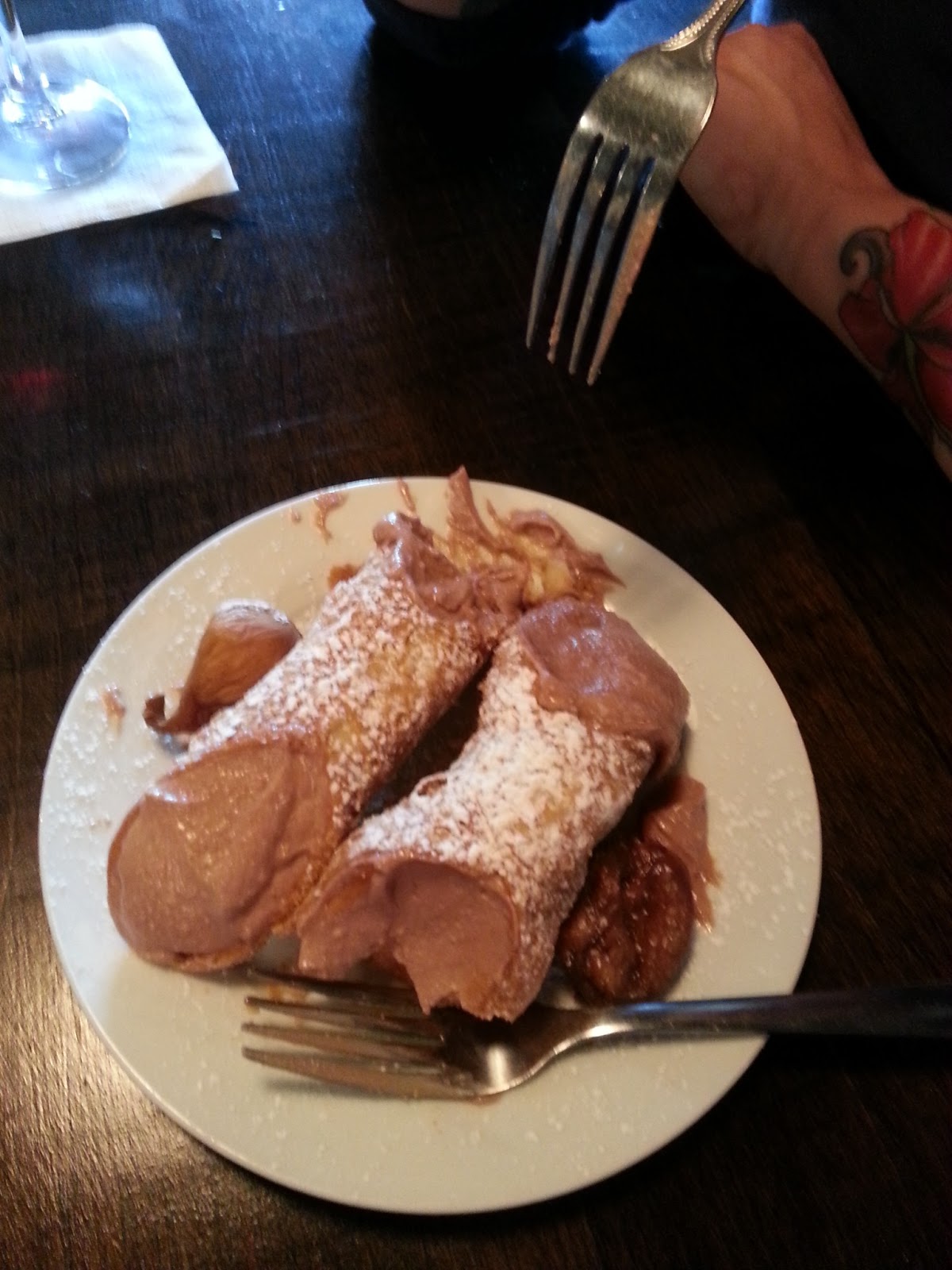Our stop for the evening is Fitger's Inn,

which was a historic brewery that closed in the mid-70s and reopened in the 80s, tastefully converted into hotel, restaurants, shops, and brew house. As you can see, this complex sits on the tip of the edge of Lake Superior and will be our jumping off point to cross Upper Minnesota into International Falls/Fort Frances, the US and Canadian border.
There are many crossings into Canada, some large, some very small. Ours is fairly small, small enough in fact to provide entertainment for the border crossing officials. If you read Ruth's previous blog you will get the point of what I mean. One thing she didn't mention, though, was after they questioned us when we drove up to the kiosk and were told to park and enter the building, they called me up to the window.
The stern-faced woman said that after running my passport and background check, they found our blog and wondered why I had so many negative things to say about the French? I was escorted into a back room and interrogated by a beefy, flack-jacketed, crew-cutted, moose-sized official. In my attempts to be friendly, I asked them in my broken high school-remembered French, "Pourquoi est-ce qu'un pays avec des relations bilaterales avec le R-U, a la reine mere sur se savise, et partager un soversign mutuel, une telle fidelite au Francais qui est colonie ils one conquis?" (Translation: "Why does a country with bi-lateral relations with the UK, has the Queen Mother on its currency, and shares a mutual sovereign, have such loyalty to the French, whose colony they conquered?")
This got me an extra half hour of time with Mr. Moose, Sir!
Finally we were freed into the bleak Fort Frances streets and I only drove five miles out of the way, still in shock.
So what's up with the title of this blog, you ask? The license plates are spot on. As we drove along there were lakes everywhere we looked, and upon stopping for a break or rest stop we were instantly deluged by swarms of angry, desperate mosquitoes. At one point, while driving and seeing lakes of infinite sizes and numbers, I commented to Ruth that it is probably a prerequisite that all properties have a lake and boat on them. If you look at a map of the western region of the province of Ontario Canada, you can see that water outnumbers land mass by a huge majority. It's practically one huge lake separated by thin land bridges, and each segment is ruled by its own beaver lodge by the way, Eh! The 10G stands for the 10 billion mosquitoes that lurk to collect tolls from the warm-blooded species in this region. Camping is not in cards for us now, not without bathing in DEET.
We passed through Ontario into the province of Manitoba and very quickly the lakes became more scarce, until all we could see around us was prairie flatness; the crackle of a campfire and the rich smell of the outdoors tickled our nostrils and interest. Just off the Trans-Canada 1 Highway in the tiny town of Moosomin, we pulled into an inviting campground with friendly hosts and a secluded spot away from fellow campers.
Instantly we became aware that we were not alone; the barely-changed relatives of the ninety-million-plus-year-old mosquitoes were there in force. We did what all our ancestors have done since the beginning of our race -- build a big-ass fire -- and smoked those suckers away while enjoying the modern day pleasures of cold cider and beer, until the sun set around 10:30-11 pm.
The next morning had to be planned with surgical precision, as our firewood was depleted. Everything that could be packed or prepped had to be entertained in the tent while the angry mosquito mob hovered expectantly outside the screen doors. No leisure coffee and breakfast, just DEET, Dash 'n' Drive, windows open to expel the one hundred who were seeking a free flight with meals included.
Everything in this blog is true except for one incident...can you guess which one it is?
By the way, don't forget to submit your suggestions on how you would build your Mojo Bag to claim the award! (See: "Got my mojo workin'")














































